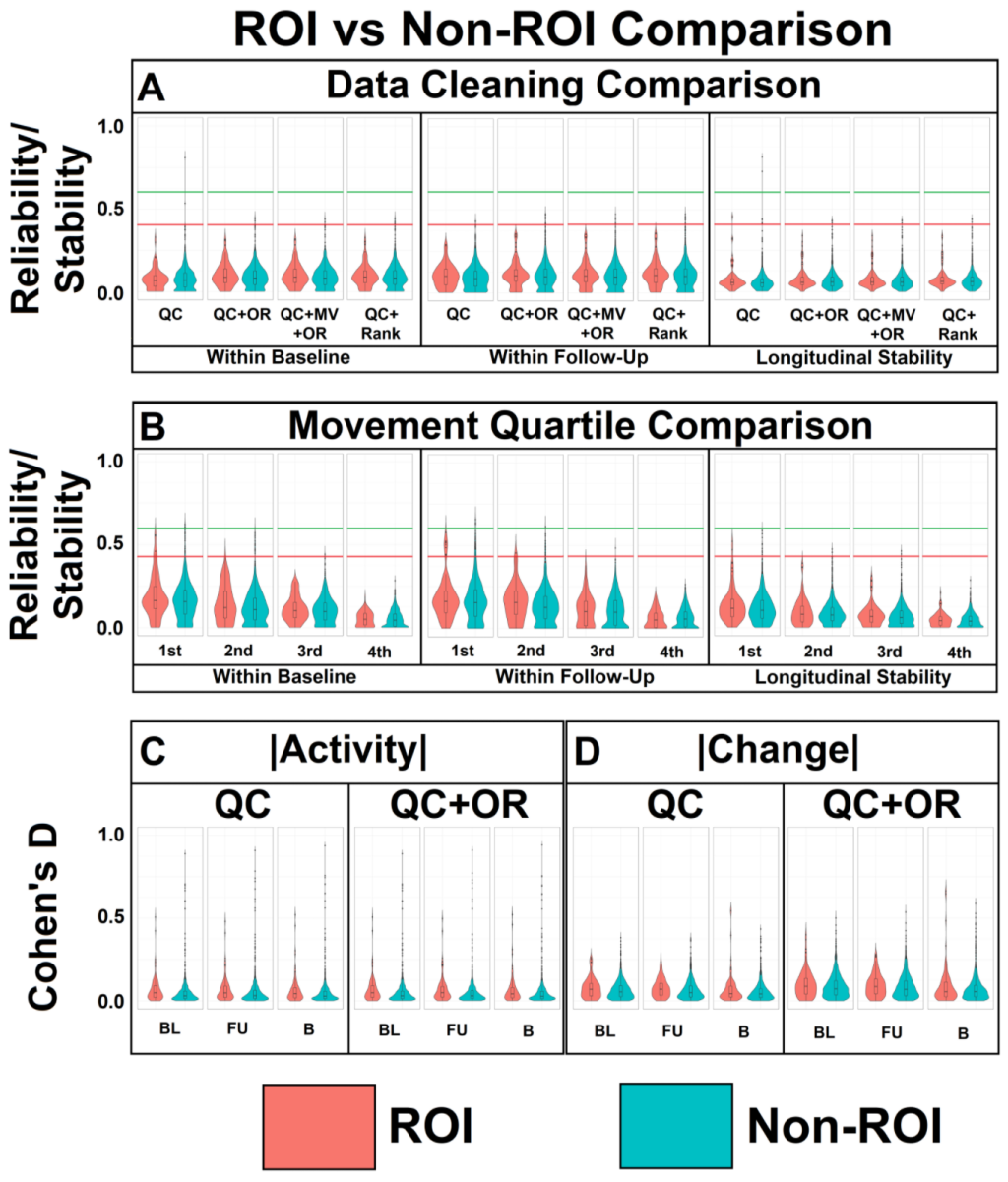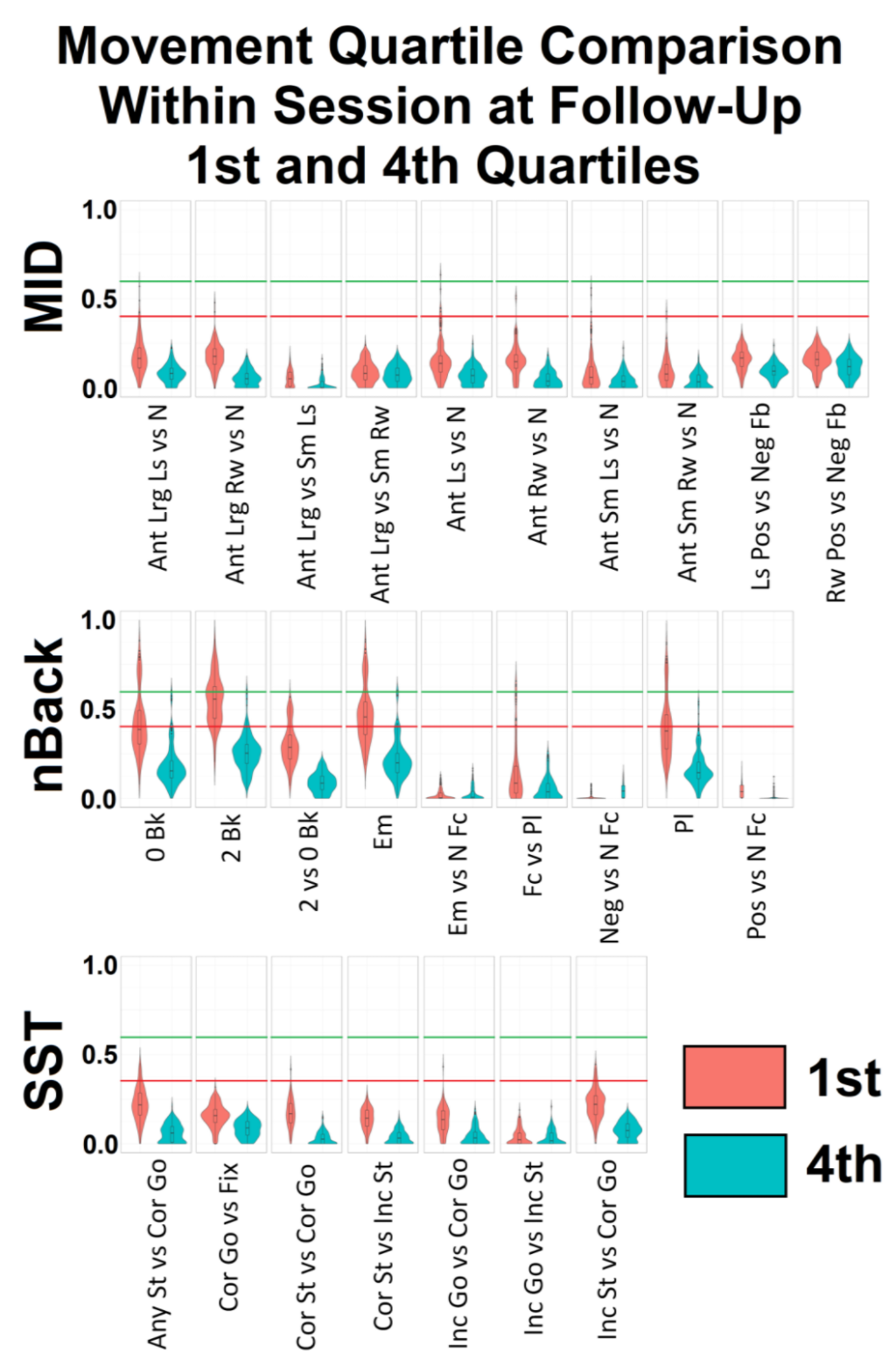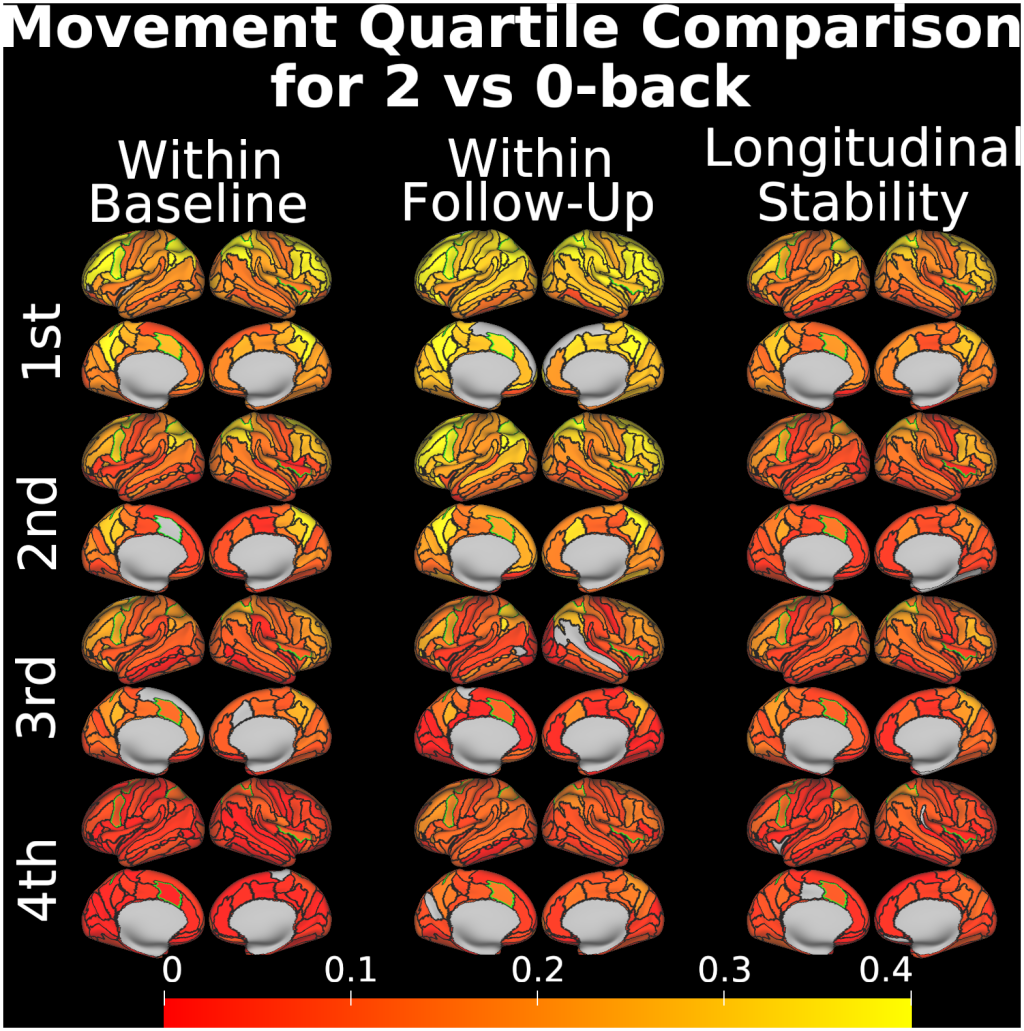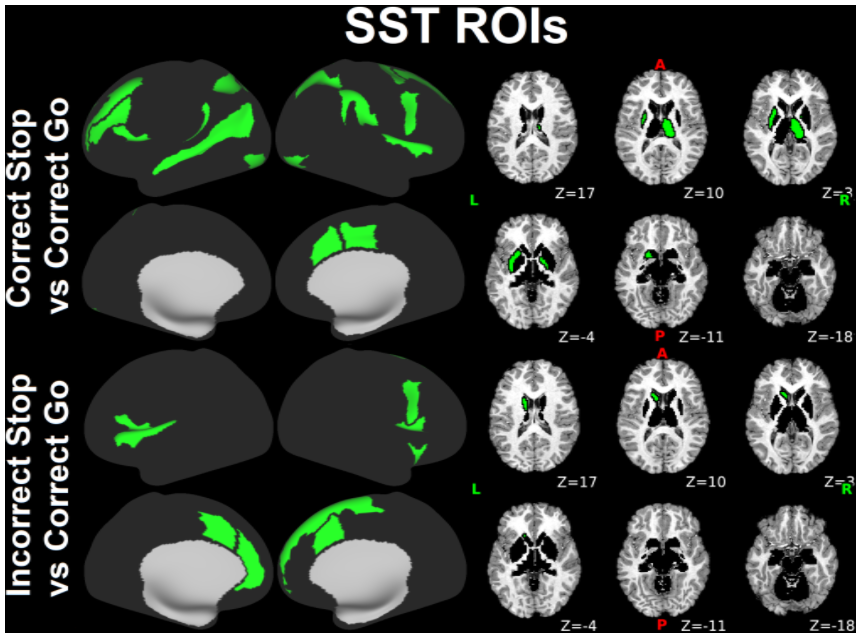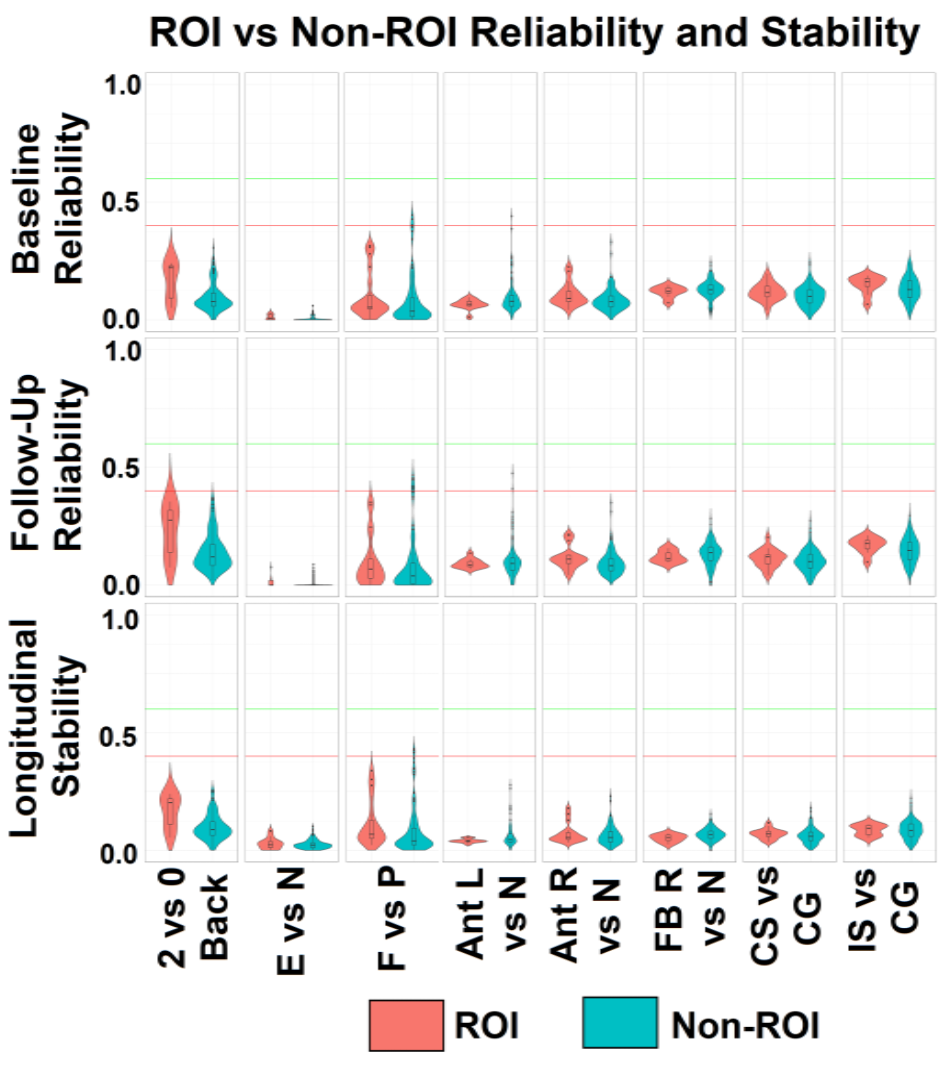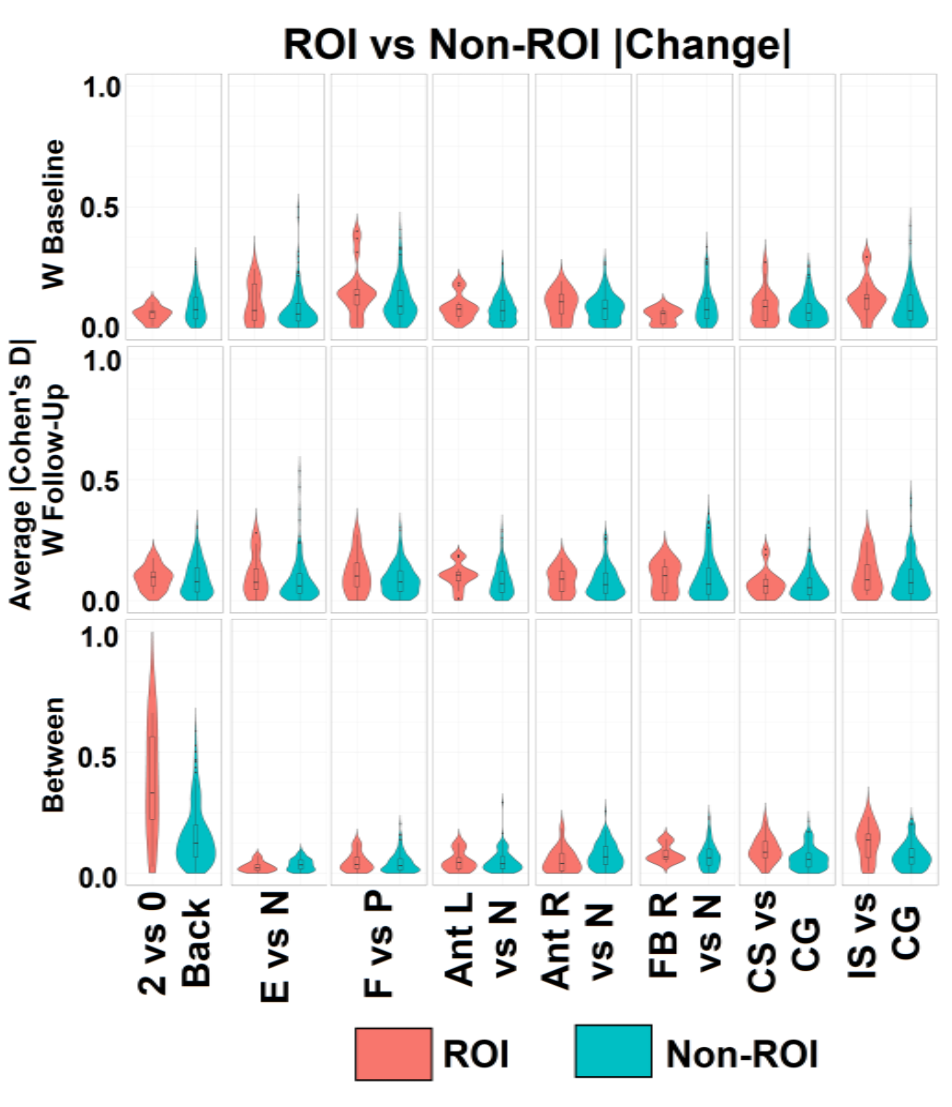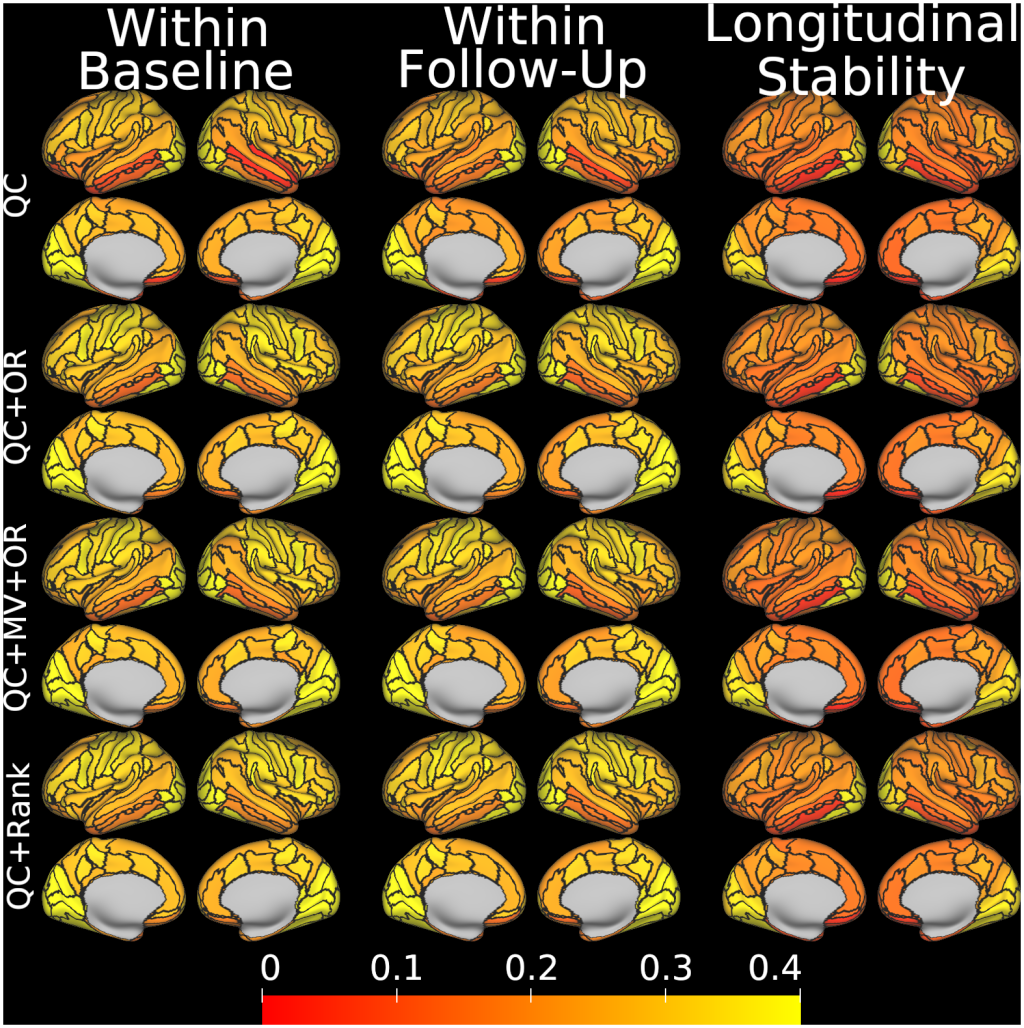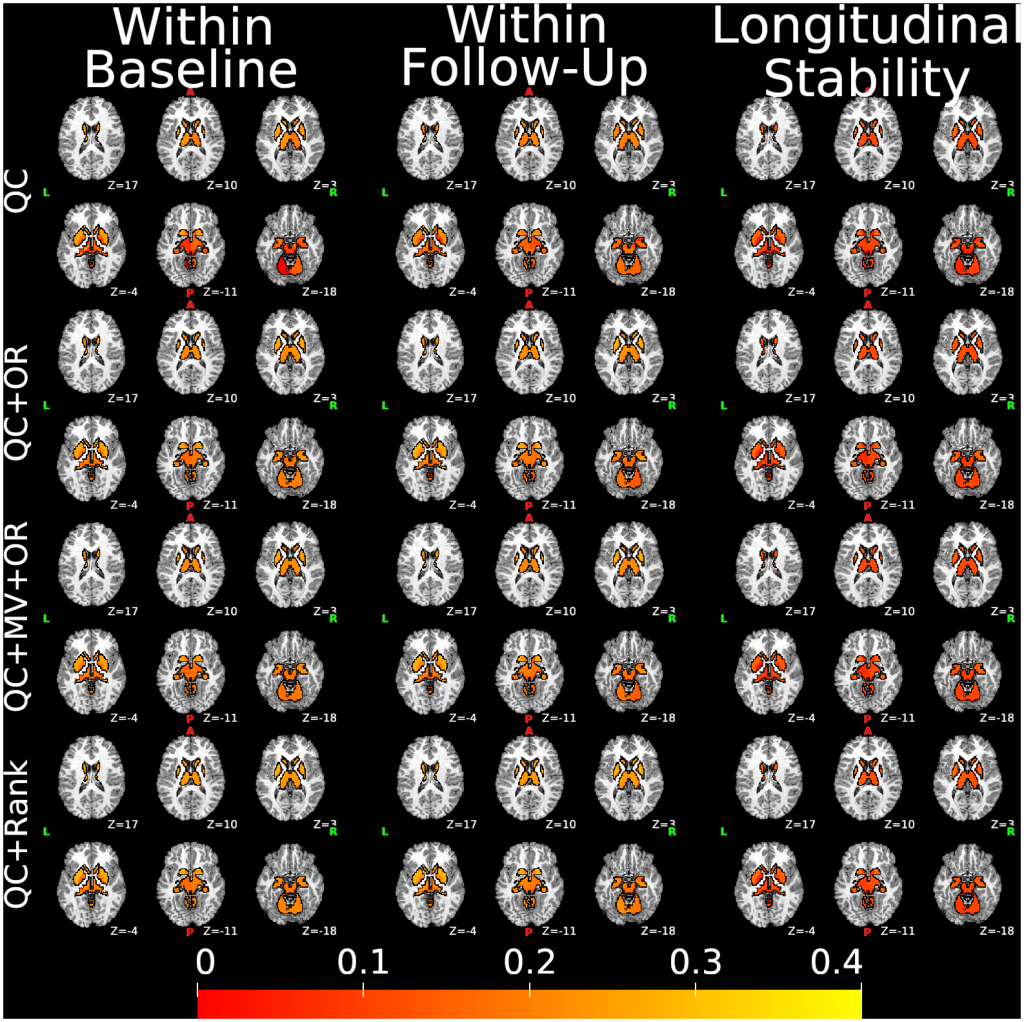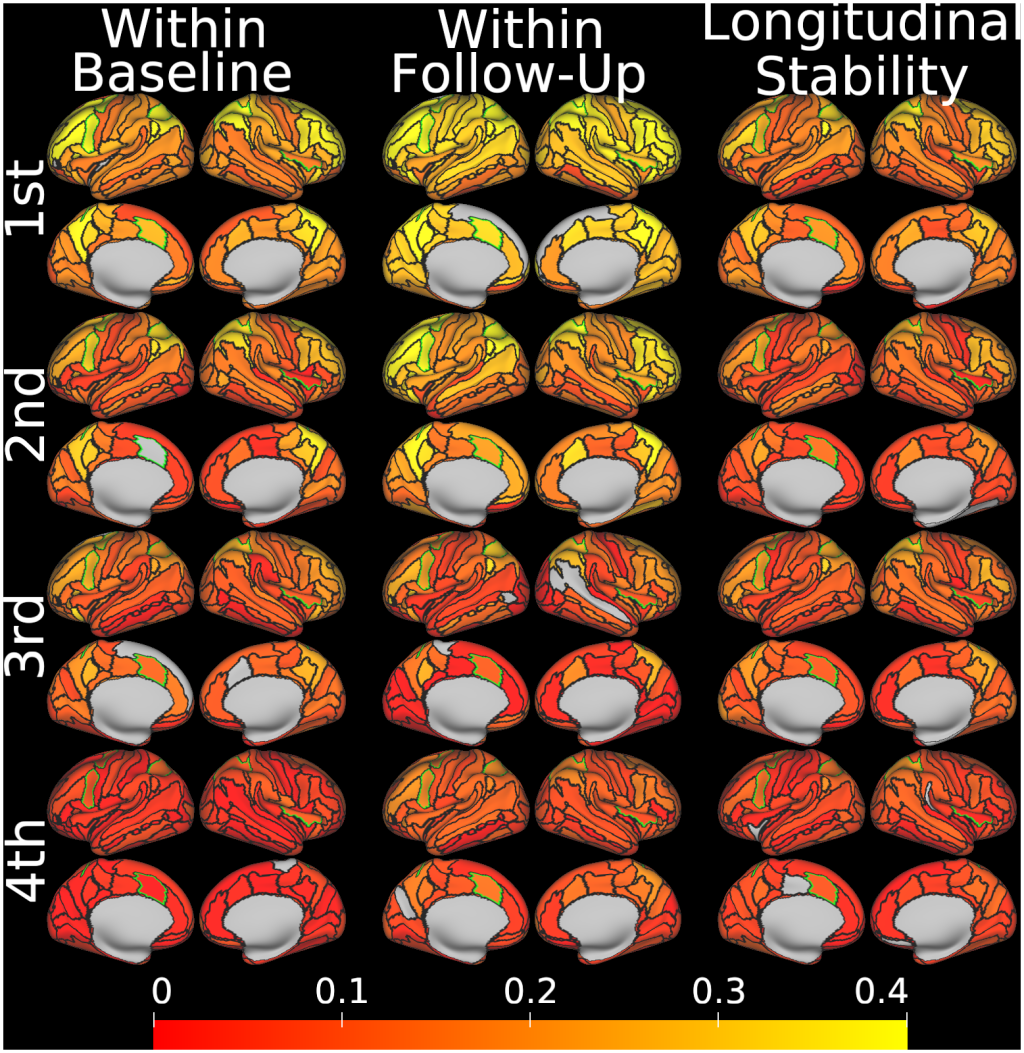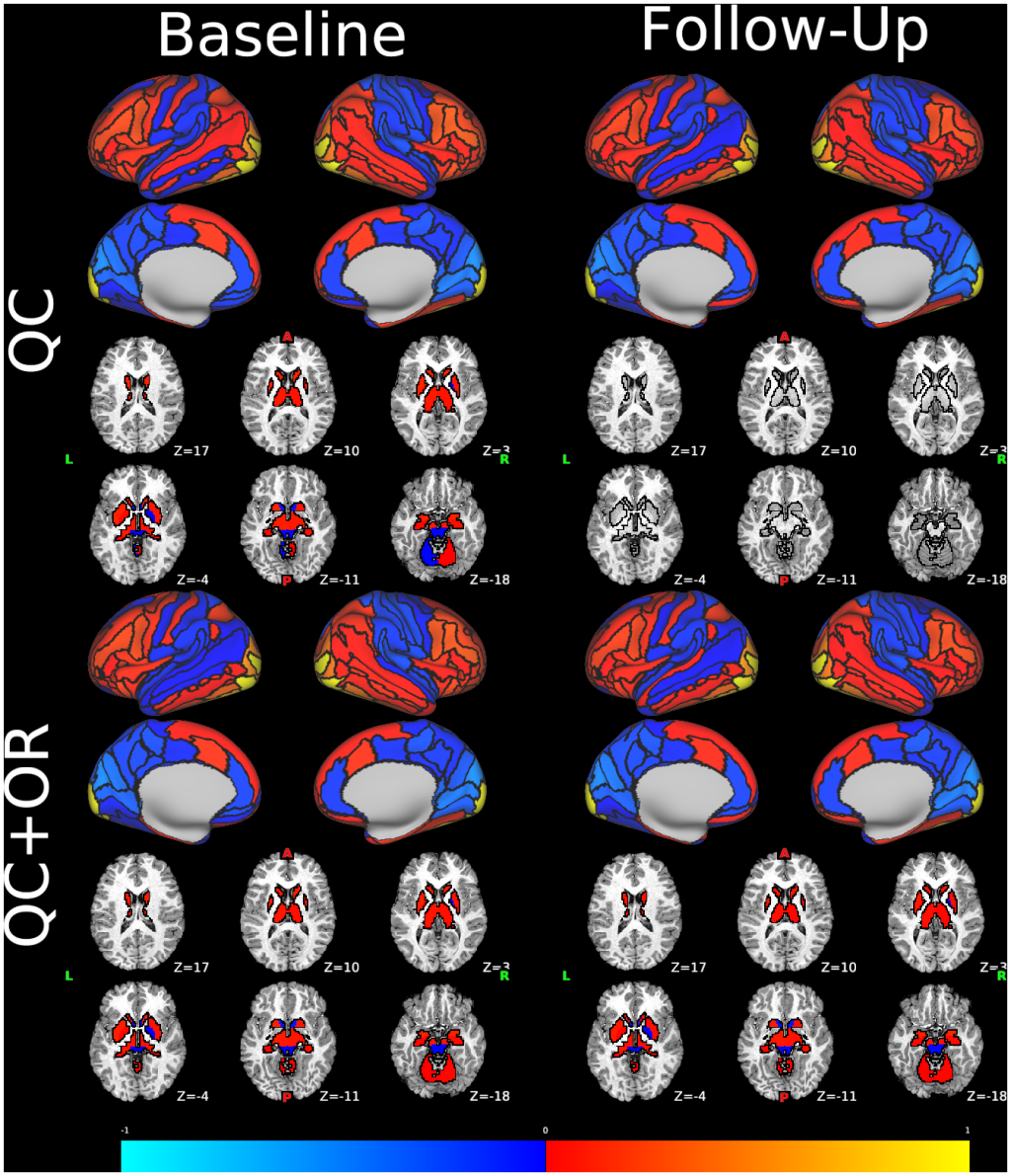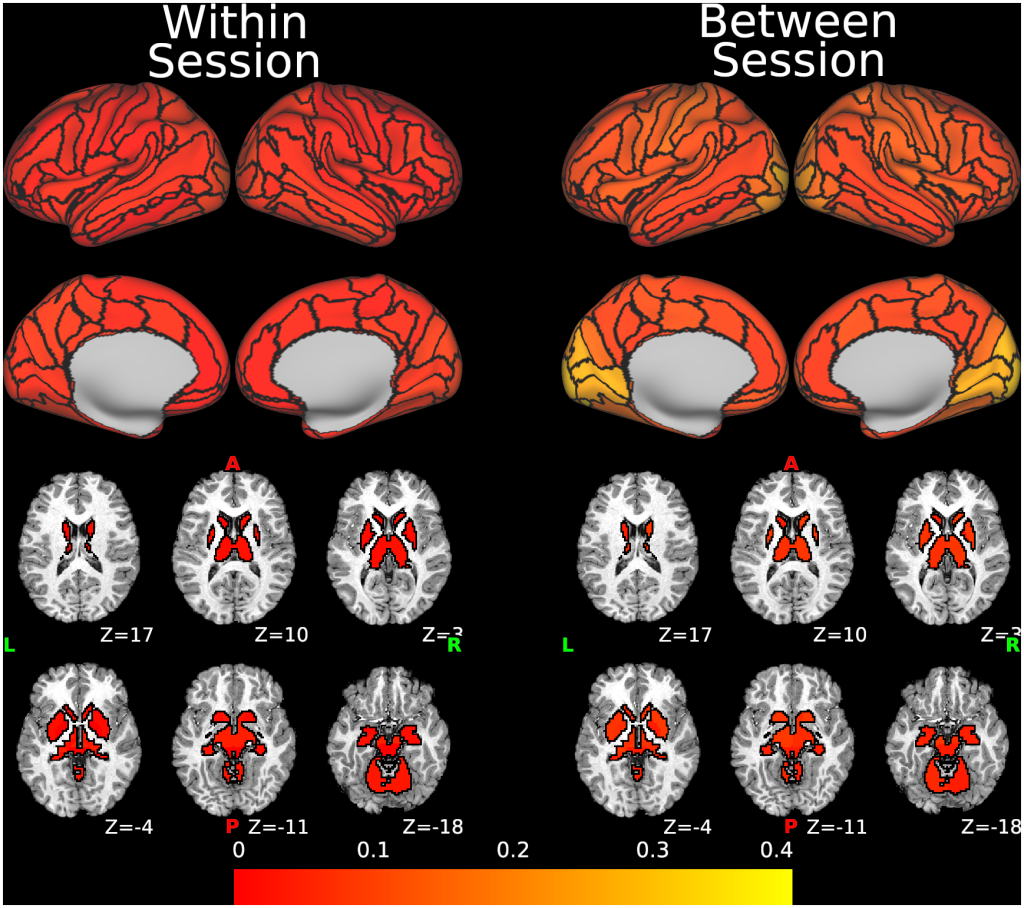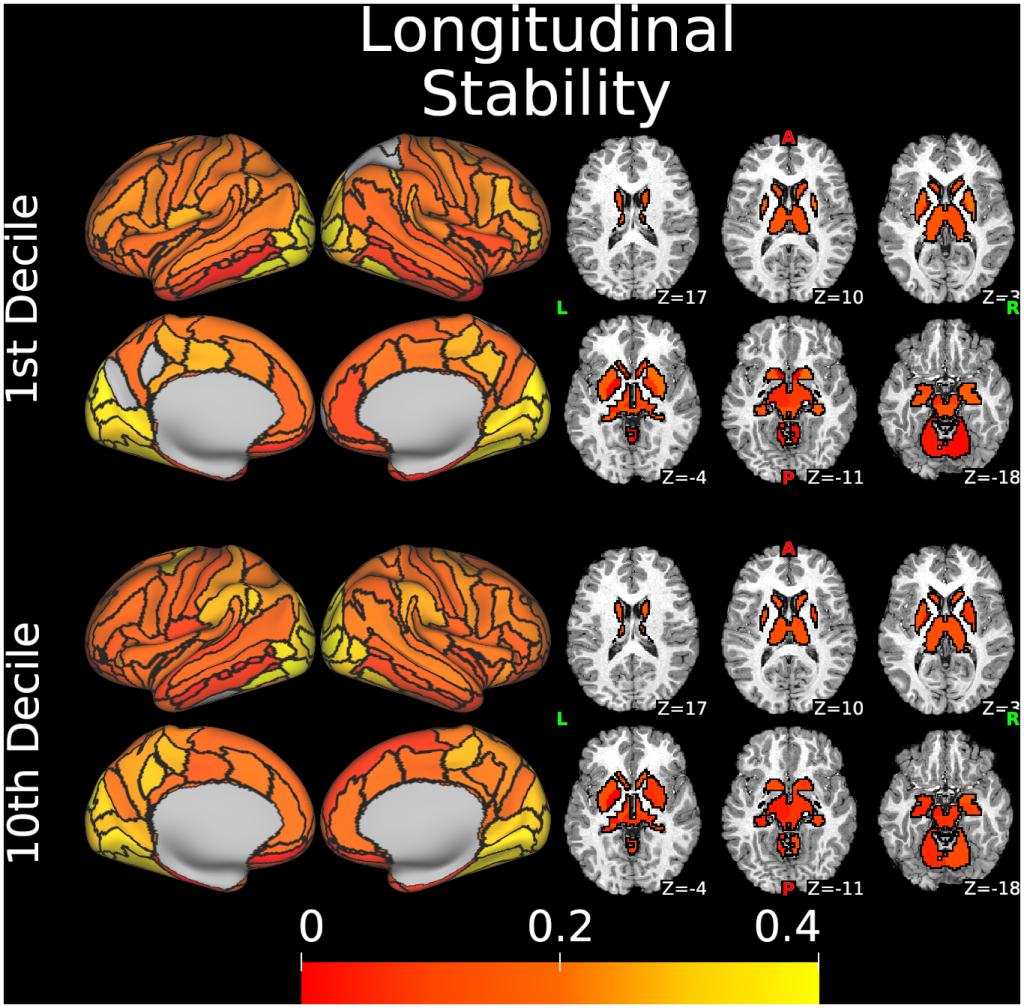FULL TITLE:
Reliability and Stability Challenges in ABCD Task fMRI Data
SPECIES:
Human
ABSTRACT:
Trait stability of measures is an essential requirement for individual differences research. Functional MRI has been increasingly used in studies that rely on the assumption of trait stability, such as attempts to relate task related brain activation to individual differences in behavior and psychopathology. However, recent research using adult samples has questioned the trait stability of task-fMRI measures, as assessed by test-retest correlations. To date, little is known about trait stability of task fMRI in children. Here, we examined within-session reliability and long term stability of individual differences in task-fMRI measures using fMRI measures of brain activation provided by the Adolescent Brain Cognitive Development (ABCD) Study Release v4.0 as an individual’s average regional activity, using its tasks focused on reward processing, response inhibition, and working memory. We also evaluated the effects of factors potentially affecting reliability and stability. Reliability and stability (quantified as the ratio of non-scanner related stable variance to all variances) was poor in virtually all brain regions, with an average value of .088 and .072 for short term (within-session) reliability and long-term (between-session) stability, respectively, in regions of interest (ROIs) historically-recruited by the tasks. Only one reliability or stability value in ROIs exceeded the ‘poor’ cut-off of .4, and in fact rarely exceeded .2 (only 4.9%). Motion had a pronounced effect on estimated reliability/stability, with the lowest motion quartile of participants having a mean reliability/stability 2.5 times higher (albeit still ‘poor’) than the highest motion quartile. Poor reliability and stability of task-fMRI, particularly in children, diminishes potential utility of fMRI data due to a drastic reduction of effect sizes and, consequently, statistical power for the detection of brain-behavior associations. This essential issue urgently needs to be addressed through optimization of data acquisition protocols, preprocessing pipelines, and data denoising methods.
PUBLICATION:
NeuroImage
- DOI:
10.1016/j.neuroimage.2022.119046
- James T. Kennedy
- Michael P. Harms
- Ozlem Korucuoglu
- Serguei V. Astafiev
- Deanna M. Barch
- Wesley K. Thompson
- James M. Bjork
- Andrey P. Anokhin
- University of California, San Diego
- Washington University in St. Louis
- Virginia Commonwealth University
-
ABCD_Reliability_Activity_Change.scene
SCENES:- Figure 1
- Figure 2
- Figure 3
- Figure 4
- Figure 5
- Supplemental Figure 1
- Supplemental Figure 2
- Supplemental Figure 3
- Supplemental Figure 4
- Supplemental Figure 5
- Supplemental Figure 6
- Supplemental Figure 7
- Supplemental Figure 8
- Supplemental Figure 9
- Regions of Interest
- Reliability and Stability - Destrieux
- Reliability and Stability - Subcortical
- Reliability and Stability Movement Quartiles - Destrieux
- Reliability and Stability Movement Quartiles - Subcortical
- Activity
- Unthresholded Activity
- Change
- Unthresholded Change
- Stability by Sex
- Stability of Change
- Stability by Run
- Stability by Intersession Interval Deciles


